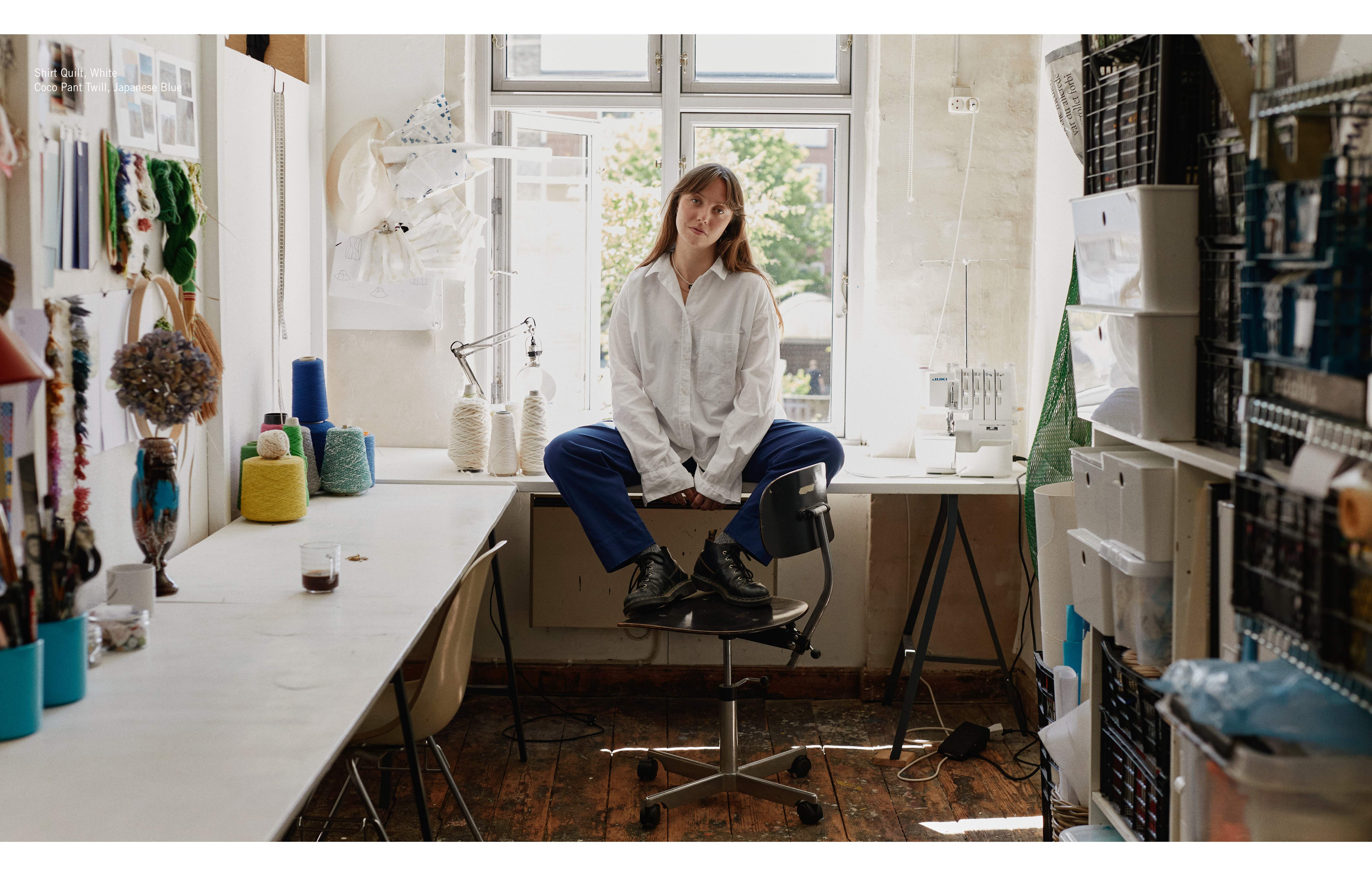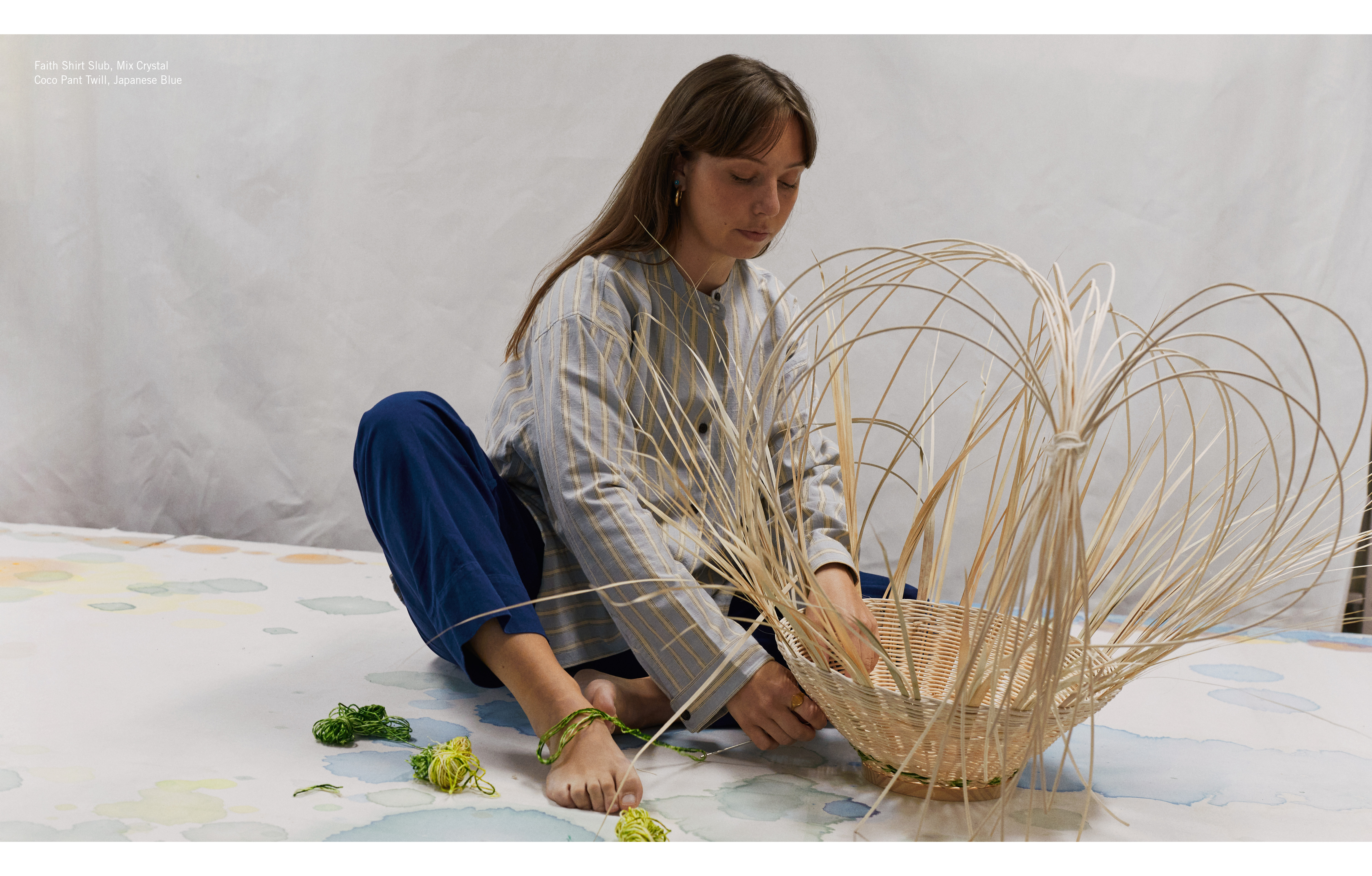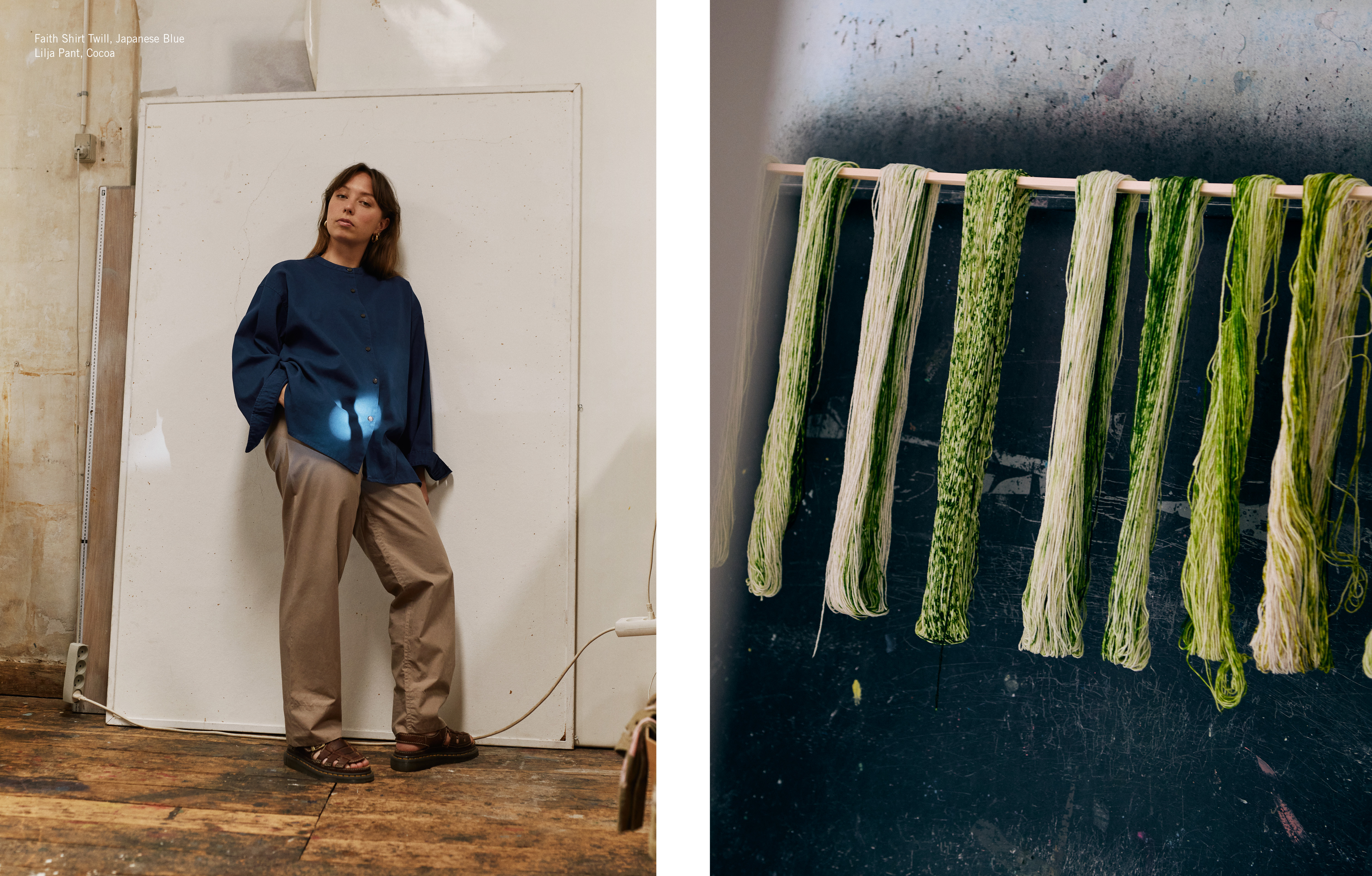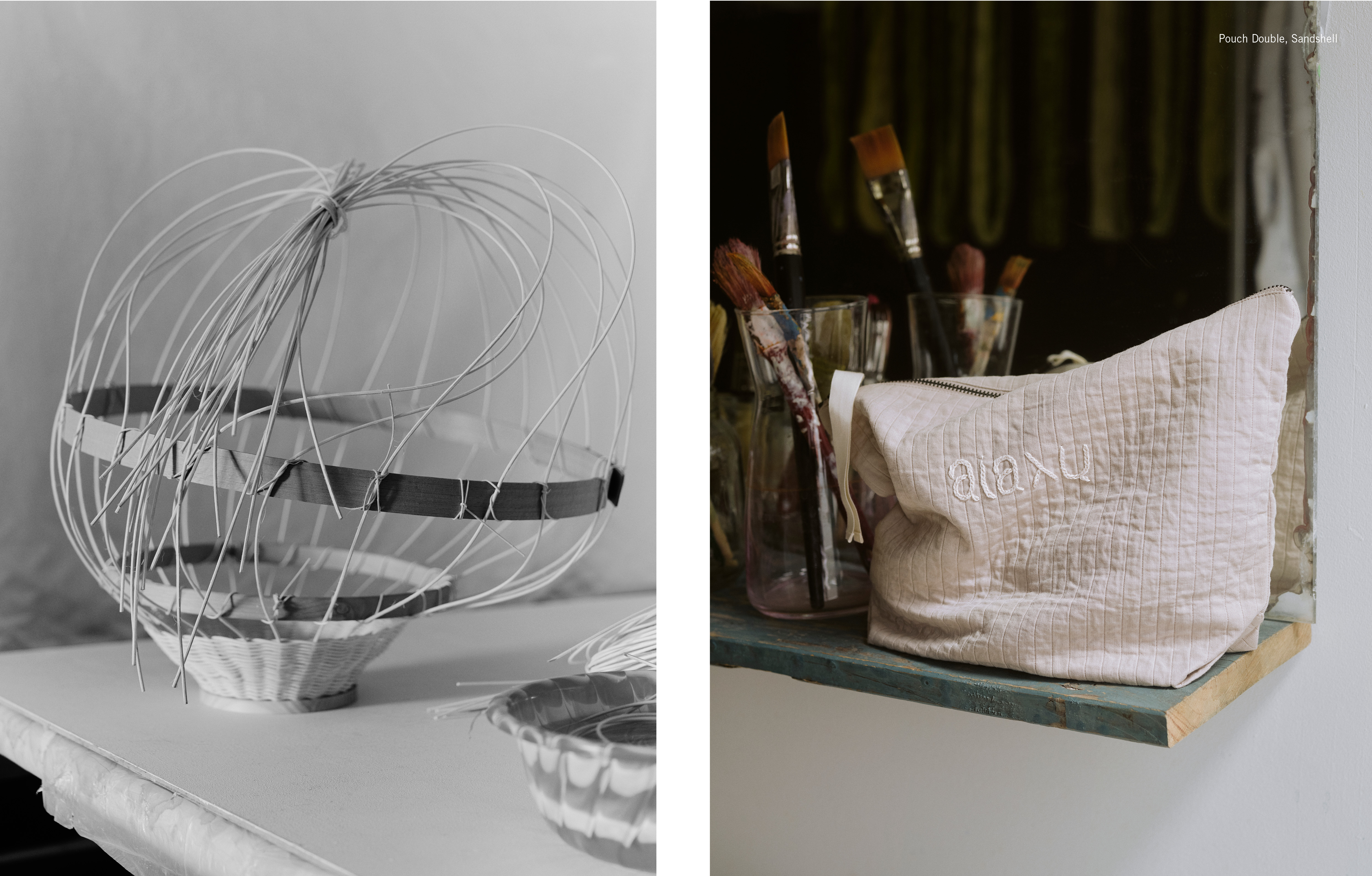Aiayu Creatives:
Designer Sia Hurtigkarl Degel
For the second installment of our Aiayu Creatives campaign, we proudly introduce Sia Hurtigkarl Degel - a multidisciplinary designer based in Copenhagen. Read on to learn more about Sia, her work ethos, and her thoughts on promoting craftsmanship through projects like the Green Gold Project in Mongolia.
Sia Hurtigkarl Degel is a Copenhagen based designer with an MA in design from The Royal Academy of Fine Arts and a BA from Eindhoven Design Academy. Her artistic practice focuses on objects, textiles, and installations. For the Aiayu Creatives project, Sia chose to interpret sartuul wool, materializing aiayu’s collaboration with the Green Gold Project in Mongolia.
On an early spring day, we joined Sia in the studio to capture her inspiring creative process in a space that is entirely her own. A space filled with tools and materials that are all a testament to Sia’s ever expanding portfolio as a multidisciplinary designer, navigating different art forms with ease.

The Green Gold Baskets
Aiayu’s Sartuul and yak wool are sourced through the Green Gold project, an initiative working to protect Mongolia’s grasslands and its nomadic herders. Sia’s final piece, The Green Gold Baskets, visually depicts the project’s positive transformation on the grasslands, symbolized through the basket’s ombre transformation from yellow to green. Each basket is an organic form of dried grass, and by weaving the hand-dyed Sartuul wool into each basket, they appear green and flourishing.


When asked to choose a natural material to interpret for the Creatives campaign, Sia was immediately drawn to Sartuul wool: a unique type of wool, which comes from the downy coat of a rare nomadic Mongolian sheep.
All our Sartuul and yak wool is sourced through the Green Gold project – an initiative working to protect Mongolia’s grasslands and its nomadic herders:
‚When I first read about the Green Gold initiative, the title Green Gold caught my attention. To understand the sourcing of a material from the bottom all the way up – from grass to ultimately wearable – is a holistic approach I firmly believe in. Both as a designer and as a human being. I was immediately inspired to work with the visual contrast between dry yellow grass and the rich green grasses at a natural field. By hand-dyeing the Sartuul wool in different shades of green, I used the Sartuul wool itself to turn the baskets from yellow to green.‘

In Sia’s own words, her work as a designer is meant to encourage discourse as well as evoke aesthetic pleasure:
‚Through my work I experiment with various materials and multiple disciplines. However, textiles will always be essential to my practice and my perception of materials and craftsmanship. I perceive design as a medium of translation: I translate narratives into material stories, and create objects for discourse, empowerment, and aesthetic pleasure. With the narrative at the forefront I seek my inspiration in human culture, rituals and local material matters.‘

Sia’s interest in the Green Gold Project also taps into her own – often very political – statement pieces:
‚My work is often motivated by issues or tendencies in present society. Recently I have been extremely provoked by the disclosure of the conditions at the construction site of the FIFA World Cup 2022 in Qatar. Not only because of the horrifying fact that many lives were lost due to alarming working conditions, but also because the export of cheap migrant labour has a massive negative effect on the national textile production and the economic condition of Nepal.‘

When asked why she thinks giving Nepalese craftsmanship a platform – like the one provided through the Green Gold Project – is important, Sia replies without hesitance:
‚Nepal is surrounded by strong economies pushing prices, material qualities and working conditions to a minimum. To support fair pyed craftsmanship is one of the best ways to maintain the superior skills of Nepalese textile workers, and to support economic independence of this smaller nation. Besides the political motivations, I have a soft spot for the beautiful Nepalese nature, the kindness I have experienced amongst the locals, and the aesthetics of real handmade textile creations.‘


In Sia’s opinion, the objects and materials we choose to bring into our lives have major impact, and are much more than beauty to behold – they are a reflection of the way we choose to live in the world:
‚I enjoy working with designs which aim to add more than just beauty to the field of design. Even though aesthetics are extremely important to my practice I believe the objects we bring into our lives have the potential to inform us about the choices we make and the world that we live in.‘
We couldn’t agree more. Thank you Sia for letting us spend a day with you.
Read more about Sia and her work here.

